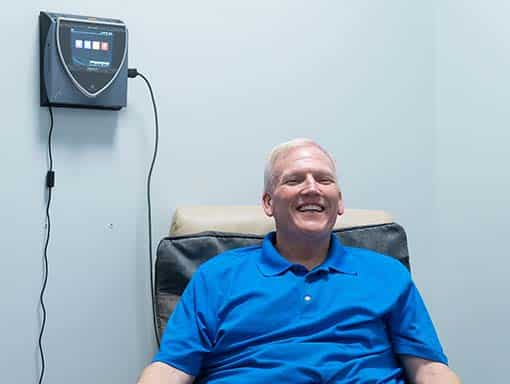Diabetes
Diabetes (DM) is a chronic health condition that affects how the body processes glucose (a type of sugar) in the blood. When you eat food, your body breaks down carbohydrates into glucose, which is then released into your bloodstream. Insulin, a hormone produced by the pancreas, helps cells absorb glucose and use it for energy. In diabetes, either the pancreas doesn’t produce enough insulin, or the body doesn’t respond properly to the insulin produced (insulin resistance). This leads to high levels of glucose in the blood which can cause a range of health problems such as heart disease, kidney disease, nerve damage, vision problems, and infections over time. However, with proper management and treatment, people with diabetes can lead healthy and active lives.
There are two main types of diabetes: type 1 diabetes and type 2 diabetes. Type 1 diabetes is an autoimmune disease that usually develops in childhood or adolescence. It occurs when the body’s immune system mistakenly attacks and destroys the cells in the pancreas that produce insulin. People with type 1 diabetes need to take insulin injections or use an insulin pump to manage their blood glucose levels.
Type 2 diabetes (T2DM) is the most common type of diabetes, accounting for around 90% of cases. It typically develops in adulthood. T2DM occurs when the body becomes resistant to the effects of insulin, or when the pancreas is not able to produce enough insulin to meet the body’s needs. People with type 2 diabetes may need to take oral medications, insulin injections, or a combination of both to manage blood glucose levels.
Extivita Therapies for Diabetes:

Hyperbaric Oxygen Therapy

Nutritional IV Therapy
Hyperbaric Oxygen Therapy for Diabetes:

Hyperbaric oxygen therapy (HBOT) has demonstrated efficacy in assisting individuals with diabetes by restoring microcirculation, enhancing blood flow, and facilitating oxygen delivery to tissues(1). Diabetes often results in inadequate circulation and diminished tissue oxygenation, which can contribute to the emergence of complications such as diabetic foot ulcers and cardiovascular disease to name a few. HBOT enhances blood oxygenation, augments circulation, and improves oxygen supply to the affected tissues, thereby stimulating healing and mitigating the risk of infection.
HBOT offers additional advantages for individuals with diabetes by exerting anti-inflammatory effects. Chronic inflammation, often observed in individuals with diabetes, can contribute to various complications such as cardiovascular disease and neuropathy. HBOT’s ability to decrease inflammation may aid in preventing or alleviating these complications. Furthermore, HBOT has shown to enhance insulin sensitivity, lead to reduction in HbA1c levels, and improve the lipid profile in diabetic patients(2-3). These benefits further highlight the potential of HBOT as a therapeutic intervention in managing diabetes-related complications.
Effects of HBOT on Diabetes:

Decreased Inflammation

New Blood Vessel Formation

Increased Stem Cell Activity
Hyperbaric oxygen therapy mobilizes stem progenitor cells (SPCs) from the bone marrow, creating the opportunity for tissue regeneration.

Antibacterial & Antimicrobial
Hyperbaric oxygen therapy has been shown to target infections and harmful bacteria, both directly and as a supplement to conventional antibiotics.
IV Therapy for Diabetes:
Intravenous vitamin C (IVC) therapy has shown potential benefits for patients with diabetes, particularly in relation to its antioxidant and anti-inflammatory effects. Here are some ways in which IVC therapy may help individuals with diabetes:
- Antioxidant effects: Vitamin C is a powerful antioxidant that helps protect cells from damage caused by free radicals. In diabetes, there is an increased production of free radicals, leading to oxidative stress and damage to blood vessels, nerves, and other tissues. By reducing oxidative stress, IVC therapy, such as the Myers cocktail, can improve cellular function and mitigate damage caused by free radicals.
- Anti-inflammatory effects: Vitamin C also possesses anti-inflammatory properties. Chronic inflammation is a characteristic feature of diabetes and can contribute to the development of complications such as cardiovascular disease and neuropathy. IVC therapy may help reduce inflammation and enhance overall immune function in individuals with diabetes.
- Improved insulin sensitivity and blood pressure control: Some studies suggest that vitamin C can improve insulin sensitivity, reduce hyperglycemia, and lower blood pressure in individuals with diabetes(4). Insulin resistance is a key factor in type 2 diabetes and enhancing insulin sensitivity can aid in better blood sugar control and reducing the risk of complications.
- Wound healing: In addition to its antioxidant properties, vitamin C plays a crucial role in collagen synthesis and fibroblast proliferation, both of which are vital for tissue remodeling and wound healing(5). IVC therapy can promote these processes, thereby facilitating wound healing.


Pulsed Electromagnetic Field Therapy (PEMF) for Diabetes:
There is indeed evidence suggesting potential benefits of Pulsed Electromagnetic Field Therapy (PEMF) for patients with diabetes. PEMF therapy offers various mechanisms that can positively impact diabetics, including the following:
- Neuropathy: Diabetic neuropathy, a microvascular complication, can result in amputations. PEMF therapy has demonstrated the ability to stimulate nerve healing and alleviate neuropathic pain caused by poor circulation(6). By improving microcirculation and promoting blood flow to the affected areas, PEMF therapy may provide relief for neuropathy.
- Cardiovascular disease: PEMF therapy’s anti-inflammatory properties may contribute to preventing or mitigating cardiovascular complications associated with diabetes. By reducing inflammation, PEMF therapy may help protect against the development of cardiovascular disease
- Improved wound healing: non-healing wounds are a common complication of diabetes. PEMF therapy has shown efficacy in promoting the healing of such wounds. By enhancing cellular function and facilitating increased blood flow to the affected areas, PEMF therapy can expedite the healing process and reduce the risk of infection.
Infrared Sauna for Diabetes:
Far infrared saunas have been shown to improve glucose control, reduce associated complications and improve quality of life in patients with diabetes(8). Infrared saunas work by using infrared frequencies or wavelengths to heat the body directly, rather than heating the surrounding air like a traditional sauna. Infrared light penetrates the skin and heats the body’s tissues directly which can lead to improved circulation, relaxation of muscles and joints, and detoxification.
There are three types of infrared radiation used in saunas: near, mid, and far. Near-infrared saunas emit the shortest wavelengths and are absorbed mainly by the skin. Mid-infrared saunas penetrate deeper into the body, while far-infrared saunas emit the longest wavelengths and can penetrate up to 1.5 inches into the body, heating the body’s tissues more deeply. A 2010 study by Beever, R. found that using FIR led to significant reductions in fasting blood glucose, hemoglobin A1c, and body weight, as well as improvements in lipid profiles(8). Another study by Zhang et al found that FIR led to significant improvements in pain, sensory function, and autonomic function(9).

Recent News & Research for Diabetes
Diabetic foot infection in hospitalized adults.
Abstract: Acute infections of the diabetic foot (DFI) are a common and complex condition. Patients are generally managed in the ambulatory setting and epidemiological data pertaining to hospitalized patients is lacking. The aim of this study was to...
Hyperbaric Oxygen Therapy Does Not Reduce Indications for Amputation in Patients With Diabetes With Nonhealing Ulcers of the Lower Limb: A Prospective, Double-Blind, Randomized Controlled Clinical Trial.
Abstract: Hyperbaric oxygen therapy (HBOT) is used for the treatment of chronic diabetic foot ulcers (DFUs). The controlled evidence for the efficacy of this treatment is limited. The goal of this study was to assess the efficacy of HBOT in...
A systematic review and meta-analysis of adjunctive therapies in diabetic foot ulcers.
Abstract: Multiple adjunctive therapies have been proposed to accelerate wound healing in patients with diabetes and foot ulcers. The aim of this systematic review is to summarize the best available evidence supporting the use of hyperbaric oxygen...
References
- Resanović, Ivana et al. “Hyperbaric Oxygen Therapy and Vascular Complications in Diabetes Mellitus.” Angiology vol. 71,10 (2020): 876-885. doi:10.1177/0003319720936925
- Baitule, Sudhanshu et al. “A Systematic Review to Assess the Impact of Hyperbaric Oxygen Therapy on Glycaemia in People with Diabetes Mellitus.” Medicina (Kaunas, Lithuania) vol. 57,10 1134. 19 Oct. 2021, doi:10.3390/medicina57101134.
- Al-Rawahi, Abdulhakeem. “Role of Hyperbaric Oxygen Therapy on Microvascular Diabetic Complications and Metabolic Profile among Patients with Type 2 Diabetes Mellitus.” Oman medical journal vol. 35,3 e129. 1 Jun. 2020, doi:10.5001/omj.2020.47
- Das, Undurti N. “Vitamin C for Type 2 Diabetes Mellitus and Hypertension.” Archives of medical research vol. 50,2 (2019): 11-14. doi:10.1016/j.arcmed.2019.05.004
- Mohammed, Bassem M et al. “Vitamin C promotes wound healing through novel pleiotropic mechanisms.” International wound journal vol. 13,4 (2016): 572-84. doi:10.1111/iwj.12484
- Graak, Vinay et al. “Evaluation of the efficacy of pulsed electromagnetic field in the management of patients with diabetic polyneuropathy.” International journal of diabetes in developing countries vol. 29,2 (2009): 56-61. doi:10.4103/0973-3930.53121
- Ross, Christina L et al. “The Use of Pulsed Electromagnetic Field to Modulate Inflammation and Improve Tissue Regeneration: A Review.” Bioelectricity vol. 1,4 (2019): 247-259. doi:10.1089/bioe.2019.0026
- Beever R. The effects of repeated thermal therapy on quality of life in patients with type II diabetes mellitus. J Altern Complement Med. 2010 Feb;16(2):677-81.
- Zhang Y, Liu J, Yao J, Ji G. Effects of far infrared therapy on neuropathy in type 2 diabetes mellitus: a randomized controlled trial. J Diabetes Sci Technol. 2015 Jan;9(1):135-8


